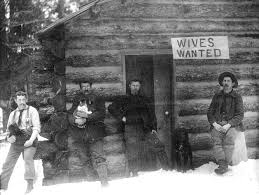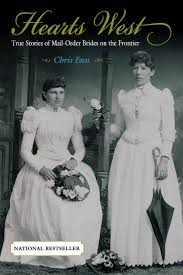Enter now to win a copy of
Hearts West: True Stories of Mail-Order Brides on the Frontier

The promise of boundless acres of land in the West lured hundreds of men away from farms, businesses, and homes in the eastern states as tales of early explorers and fur trappers filtered back from the frontier. Thousands more headed for California after hearing the siren call of Gold! Tracts of timber in the Northwest and a farming paradise in the Willamette Valley of Oregon had even more people packing up and leaving home for the promised land.
The vast acres and the trees and the gold were all there, and men set about carving their place in the wilderness. By the early 1850s, western adventurers lifted their heads and looked around and realized one vital element was missing from the bountiful western territories: women.
“A woman’s track was discovered in the road leading to Mormon Island. The track of a woman was such a novel thing the boys enclosed it with sticks (you know women were scared in California in those days), sang, danced, telling yarns and giving cheers to the woman’s track in the dust until a late hour in the evening,” recalled Henry Bigler, third governor of California.
Eliza Farnham, recognizing that she was no beauty, nevertheless was astonished to be the target of admiring eyes wherever she went in the Gold Country in 1849. Shocked at the dissolute lives of the largely male inhabitants of California, she conceived a plan to bring proper ladies to the West, which she saw as badly in need of the civilizing hand of women. Her plan included a rigorous application process to guarantee only the most virtuous ladies would arrive on the good ship Angelique. The plan was widely publicized and endorsed by clergymen and officials. With anticipation running high, hundreds of angry bachelors nearly started a riot when just three ladies tiptoed down the gangplank in San Francisco.
In Washington Territory, where men outnumbered women nine to one in the 1850s and 1860s, a scheme to ship respectable women and families to the shores of Puget Sound was hatched by Asa Mercer. He raised money for the first trip, traveled to the eastern seaboard, and in 1864 brought his first shipload of marriageable women to Seattle. Only eleven women disembarked, leaving a lot of disillusioned bachelors. Mercer’s second trip in 1866 netted a larger cargo of potential brides, but the trip was to be his last attempt at supplying a rather urgent demand.


